SEO
11 Tips For Promoting Your Local Business On Instagram

Instagram is perfect for your local business.
No, really.
I know what you’re thinking, “How could a social media platform full of funny cat videos, posts from influencers, and pictures of food help you land more customers and make more sales?”
Believe it or not, there’s actually a whole lot more to Instagram than just fun pictures and videos.
It’s also increasingly becoming a marketplace, with a full 70% of shoppers looking on Instagram for their next purchase. And 50% report being more interested in a brand when they see ads for it there.
Now consider that there are 1.13 billion people using the platform, with more joining every day. That’s a whole lot of potential customers, which explains why there are more than 200 million businesses on Instagram.
But becoming Insta-famous is more than just creating an account and posting product shots. There’s an art to cultivating a following for your local business. And you’re in the right spot to learn how.
In this guide, you’ll learn 11 tips that you can use on Instagram to reach a wider audience, generate engagement, promote your local business, and generate sales.
1. Participate, Participate, Participate
Before anything else, Instagram, like any social media platform, is a community.
And just like your business is a valuable part of your local community, you also want to show that you’re a reputable and valuable member of the Instagram community.
This will help you earn followers eager to engage with your content.
But posting great images or videos is not enough!
To establish your reputation in the Instagram community, you want to create relationships with influencers and other brands (even direct competitors) and join the conversations they’re starting. Interact with the content they’re producing and engage with other Instagram users.
You must spend engagement to make engagement.
And when your followers create a conversation in the comment section of your posts, actively join those talks and respond to questions, concerns, praise, and other sentiments.
This is also a great chance to address any potential negative experiences, get out in front of bad publicity, and show your followers that their opinions matter to you.
2. Strengthen Your Instagram Community By Reposting Local Content
You can enhance your business’s reputation on Instagram and in your local community by regularly reposting content published by your local followers, other businesses in your area, and local celebrities.
Not only will the content creator feel great that their content is being featured by your business, but other followers will take notice.
They may mention your “shout out” on their Instagram page, which will help you reach their followers and even more people in your local community. Win, win!
When you share content created by real people, it makes your brand seem more approachable and human.
In other words, your company begins to feel like a friendly neighbor, instead of a business after sales.
This strategy is not only effective at creating a stronger reputation in the community, but it also saves you a lot of time creating original, unique content.
Just be sure to ask first and tag the user’s Instagram account.
3. Maintain A Consistent Brand Identity
Your business Instagram account is just another extension of your brand.
While Instagram is a unique platform that can (and should be) used to achieve different objectives from other touchpoints, even your other social media accounts, you need to keep a sense of consistency across all platforms, especially in terms of the tone and personality set by your brand.
Many customers follow your brand across several, if not all, of these different channels.
If your Instagram persona is dissimilar from the tone set by your website, Facebook page, or your in-store employees, you run a strong risk of confusing your customers.
That means your customer interactions on Instagram and the tone you set in the captions of your posts need to align with how it really feels to visit your business in person.
Otherwise, you may have customers walking in expecting the jovial, upbeat business they met on Instagram, only to be underwhelmed.
This creates a disruption in their customer journey and may disenchant them all together.
4. Avoid Blanket Posting
While the tone and persona behind your posts need to remain consistent across different channels, too much similarity can be damaging.
You have to carefully navigate the space between remaining consistent and posting unique content, without blanket posting, that is, using the exact same message and content across different social media platforms.
The danger of blanket posting is that customers who follow you across multiple social media channels are going to see the exact same message multiple times.
After the first time, it stops being engaging and starts being disruptive. Remember, every channel is different and should be treated as such.
That said, there are times when blanket posting is acceptable, like when your business is hosting a local event or releasing new products and you want as many people to hear about this news/event/product(s) as possible.
However, you still want to be sure that you’re cross-promoting responsibly.
Responsible cross-promoting isn’t just copying and pasting your efforts from one platform to the next, but using each channel appropriately to promote the same cause.
5. Demonstrate Your Local Lifestyle
Your business’s local lifestyle can best be described as the life a customer leads after they’ve purchased your products.
Because Instagram is such a visual social media platform, it‘s the perfect channel to demonstrate what your brand’s local lifestyle looks like.
Incorporate pictures of your products in action to let customers envision living that lifestyle.
This strengthens your overall brand value and encourages those customers to make a purchase.
When creating images or videos that demonstrate the local lifestyle offered by your products, you should always aim to incorporate popular landmarks in your town.
Not only are these places recognizable and familiar, but they will help complete the customer’s vision of your products in their life, especially if you use landmarks they frequently visit.
6. Go With The Trends
Holidays can always be counted on to become a trending topic and businesses have long taken advantage of these days to engage customers with holiday-themed messages.
But there are a lot of other popular topics you can leverage to create compelling Instagram content.
This is a great way to garner some local attention while posting content that is relevant and interesting to your local followers.
To find trending hashtags in your area, you want to pay attention to the news, local events, and community-specific holidays.
That’s why it’s smart to follow other businesses, local celebrities, and other community thought leaders because you can look at their Instagram for inspiration on trending and local keywords to use.
However, there is a dark side to leveraging trending topics. Some brands push the envelope and try to hijack topics that are better left alone.
For example, if a tragic event occurs, you want to avoid it. Otherwise, it may appear like you’re trying to capitalize on the misfortune of others.
Controversial topics are another sore spot for many people, and you’ll do less harm to just ignore them. Things like politics, religion, or other controversial topics are a no-no!
7. Focus On Localized Hashtags
Speaking of hashtags, there are a lot of parallels between hashtags and SEO keywords.
To optimize the local reach of your Instagram page, you need to focus on localized hashtags.
This allows people in your area to find your posts and your business through area-specific hashtags.
Instead of slapping a generic #nature on your outdoor photo’s caption, use a hashtag that includes your location, like #NewportNature.
It’s also good practice to include hashtags that include your area and the type of business you run. Again, hashtags are a lot like keywords.
If people are searching Instagram for a hairstylist in Chicago (and you happen to be a hairstylist in Chicago), you want your business’s Instagram content to appear in that search.
Thus, you would want to hashtag your content with tags like #ChicagoHairStylist, #ChicagoHair, or #ChicagoBeauty.
The challenge, in terms of localized hashtags, is knowing how local to get.
Do you focus on your specific town or entire state? Is it better to use a hashtag with just your town’s name, or is there more volume in the town and state? Maybe you should target within your specific neighborhood?
There’s no universal, correct answer to this question. It largely depends on how people search in your local area. You will need to do some research to determine the best local hashtags to use in your area.
You may find third-party tools, like Hashtagify or Focalmark useful, as they allow you to enter a keyword/hashtag and see other related words and phrases.
These tools are great for tracking the performance of various hashtags, while also gaining inspiration for new ones.
You can leverage these tools to find great local hashtags and better understand how people search in your area.
8. Include A Link In Your Bio
This may seem obvious, but it is an absolute necessity to link to your website on Instagram.
And your business page’s bio is the only space on Instagram that can include a link, so you must capitalize on it.
Without this link, followers won’t be able to convert by visiting your website, buying your products, or engaging with your brand elsewhere.
Wherever it is you want your followers to go after consuming your Instagram content, that link needs to be in your bio.
You may also want to include information about your other social media accounts, like your company’s Twitter handle.
And, as a local business, it’s also crucial to include your address, so followers know where to find you.
9. Create Professional, Creative Content
This may go without saying, but there are a lot of business pages on Instagram that routinely post images and videos that are of lower quality, blurry, or poorly composed.
If you want to gain a serious edge on Instagram, consider investing in a higher quality camera, rather than just using your smartphone.
You may even decide to invest in a professional photographer to help you create compelling pictures.
After all, Instagram is a visual platform, if you want to really excel at promoting your business in this environment, then you need to create the best visual content possible.
This is especially important if you’re sharing product pictures. You really want followers to see the item and be able to envision themselves using it (remember, local lifestyle).
If the picture is low quality, not only will they fail to do this, but they may be convinced that your products are poor quality, too.
10. Geotag Your Posts
This is another strategy that, while seeming obvious, is something a lot of local businesses forget to do.
If you want Instagram followers to discover and visit your local business, you need to tell them (and Instagram) where to find your business.
You can geotag individual posts with a location.
When users click that location link, they are brought to a map page within the app that shows them exactly where your business is. It also shows other content posted from this location.
However, you shouldn’t always geotag your exact business location.
If you post content about a landmark or specific area in your locale, geotagging that location can create some post variety and creates the opportunity for your content to be discovered by people that search those locations on Instagram.
This also helps demonstrate the sense that your business is an active participant in the community.
11. Track & Measure Your Efforts Constantly
Consumer attitudes and behaviors change and that means your Instagram followers are also going to change their preferences.
You should always be paying attention to the content that creates the most engagement and investigating why sudden spikes in likes, comments, and shares occurred.
When possible, ask people who visit your local business as a result of your Instagram efforts what drew them in. The insights they share with you will be invaluable.
Conclusion
And where Instagram really shines is in its ability to bring culture to life.
From shared stories to interactions in the comments section, it provides lots of opportunities for you to show off just what makes your business great.
Instagram gives businesses a ton of options for promoting themselves.
And, whether you’re relying on completely organic posting or you’re supplementing with paid ads, it gives you plenty of routes for people to discover and engage with you.
As the platform ramps up its branded content features and shopping features, this trend seems sure to continue. eMarketer predicts retail social commerce will be an $80 billion industry by 2025, so the sooner you get on board, the better.
But, as you navigate this exciting new world of expanded social media, don’t forget about your local market.
Keep your target audience in mind, pay attention to trends, and don’t be afraid to try something new.
Happy posting!
More Resources:
Featured Image: Bogdan Sonjachnyj/Shutterstock
!function(f,b,e,v,n,t,s)
{if(f.fbq)return;n=f.fbq=function(){n.callMethod?
n.callMethod.apply(n,arguments):n.queue.push(arguments)};
if(!f._fbq)f._fbq=n;n.push=n;n.loaded=!0;n.version=’2.0′;
n.queue=[];t=b.createElement(e);t.async=!0;
t.src=v;s=b.getElementsByTagName(e)[0];
s.parentNode.insertBefore(t,s)}(window,document,’script’,
‘https://connect.facebook.net/en_US/fbevents.js’);
if( typeof sopp !== “undefined” && sopp === ‘yes’ ){
fbq(‘dataProcessingOptions’, [‘LDU’], 1, 1000);
}else{
fbq(‘dataProcessingOptions’, []);
}
fbq(‘init’, ‘1321385257908563’);
fbq(‘track’, ‘PageView’);
fbq(‘trackSingle’, ‘1321385257908563’, ‘ViewContent’, {
content_name: ‘promote-local-business-instagram’,
content_category: ‘instagram local-search social-strategy’
});
SEO
Measuring Content Impact Across The Customer Journey

Understanding the impact of your content at every touchpoint of the customer journey is essential – but that’s easier said than done. From attracting potential leads to nurturing them into loyal customers, there are many touchpoints to look into.
So how do you identify and take advantage of these opportunities for growth?
Watch this on-demand webinar and learn a comprehensive approach for measuring the value of your content initiatives, so you can optimize resource allocation for maximum impact.
You’ll learn:
- Fresh methods for measuring your content’s impact.
- Fascinating insights using first-touch attribution, and how it differs from the usual last-touch perspective.
- Ways to persuade decision-makers to invest in more content by showcasing its value convincingly.
With Bill Franklin and Oliver Tani of DAC Group, we unravel the nuances of attribution modeling, emphasizing the significance of layering first-touch and last-touch attribution within your measurement strategy.
Check out these insights to help you craft compelling content tailored to each stage, using an approach rooted in first-hand experience to ensure your content resonates.
Whether you’re a seasoned marketer or new to content measurement, this webinar promises valuable insights and actionable tactics to elevate your SEO game and optimize your content initiatives for success.
View the slides below or check out the full webinar for all the details.
SEO
How to Find and Use Competitor Keywords

Competitor keywords are the keywords your rivals rank for in Google’s search results. They may rank organically or pay for Google Ads to rank in the paid results.
Knowing your competitors’ keywords is the easiest form of keyword research. If your competitors rank for or target particular keywords, it might be worth it for you to target them, too.
There is no way to see your competitors’ keywords without a tool like Ahrefs, which has a database of keywords and the sites that rank for them. As far as we know, Ahrefs has the biggest database of these keywords.
How to find all the keywords your competitor ranks for
- Go to Ahrefs’ Site Explorer
- Enter your competitor’s domain
- Go to the Organic keywords report
The report is sorted by traffic to show you the keywords sending your competitor the most visits. For example, Mailchimp gets most of its organic traffic from the keyword “mailchimp.”


Since you’re unlikely to rank for your competitor’s brand, you might want to exclude branded keywords from the report. You can do this by adding a Keyword > Doesn’t contain filter. In this example, we’ll filter out keywords containing “mailchimp” or any potential misspellings:
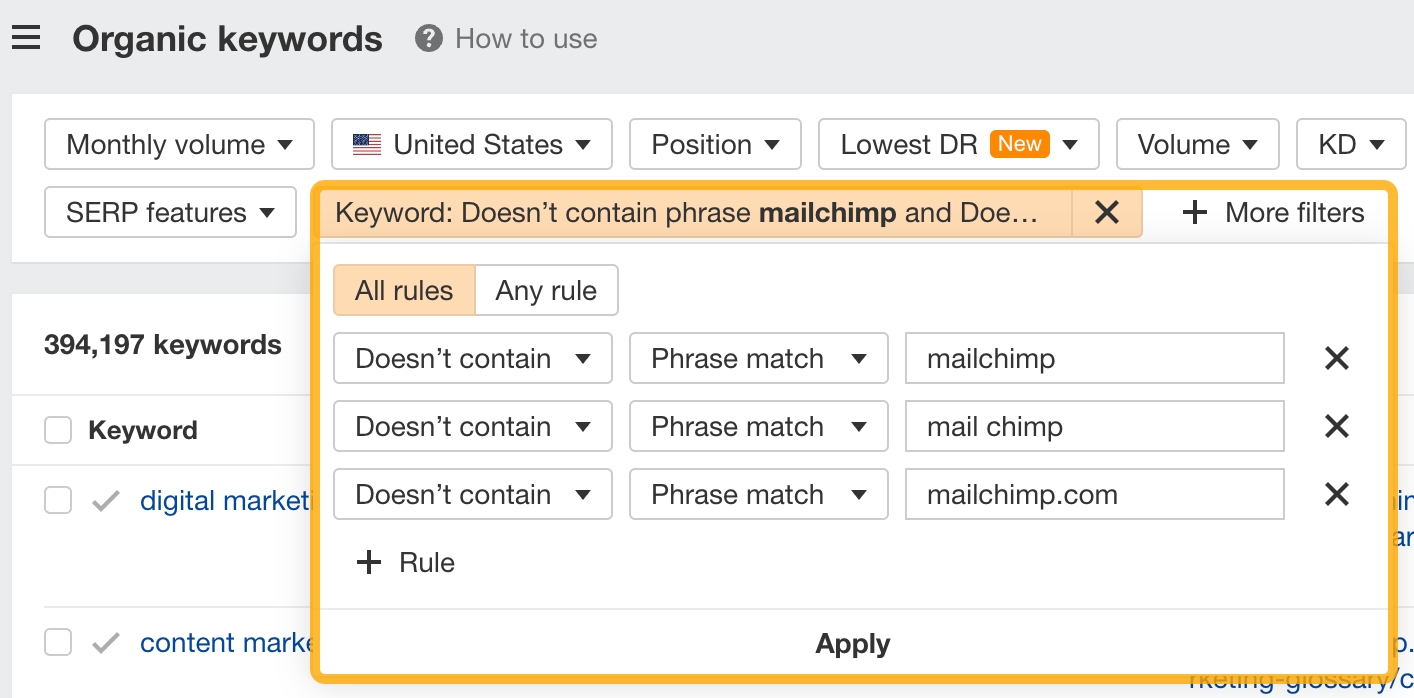

If you’re a new brand competing with one that’s established, you might also want to look for popular low-difficulty keywords. You can do this by setting the Volume filter to a minimum of 500 and the KD filter to a maximum of 10.
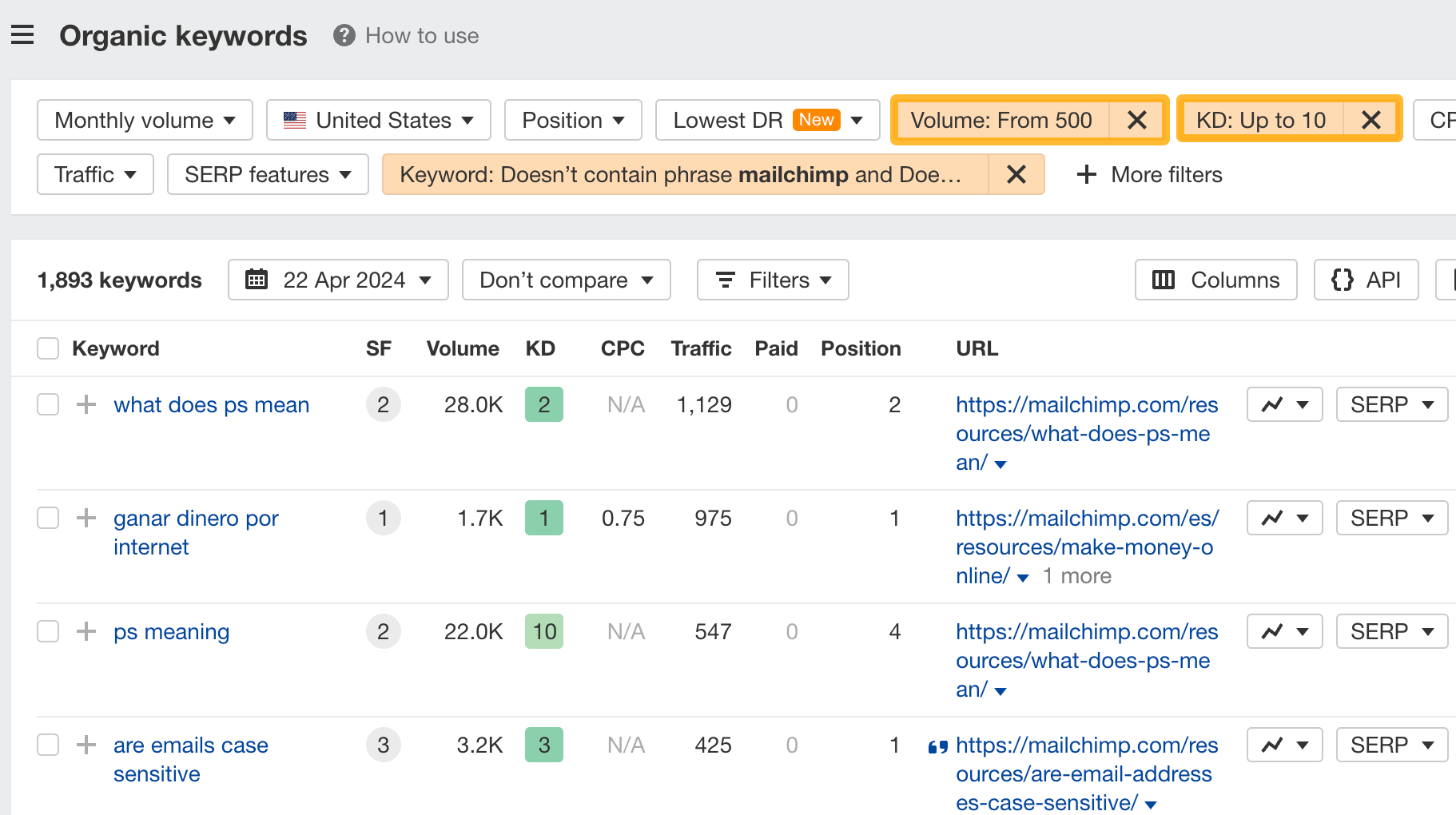

How to find keywords your competitor ranks for, but you don’t
- Go to Competitive Analysis
- Enter your domain in the This target doesn’t rank for section
- Enter your competitor’s domain in the But these competitors do section
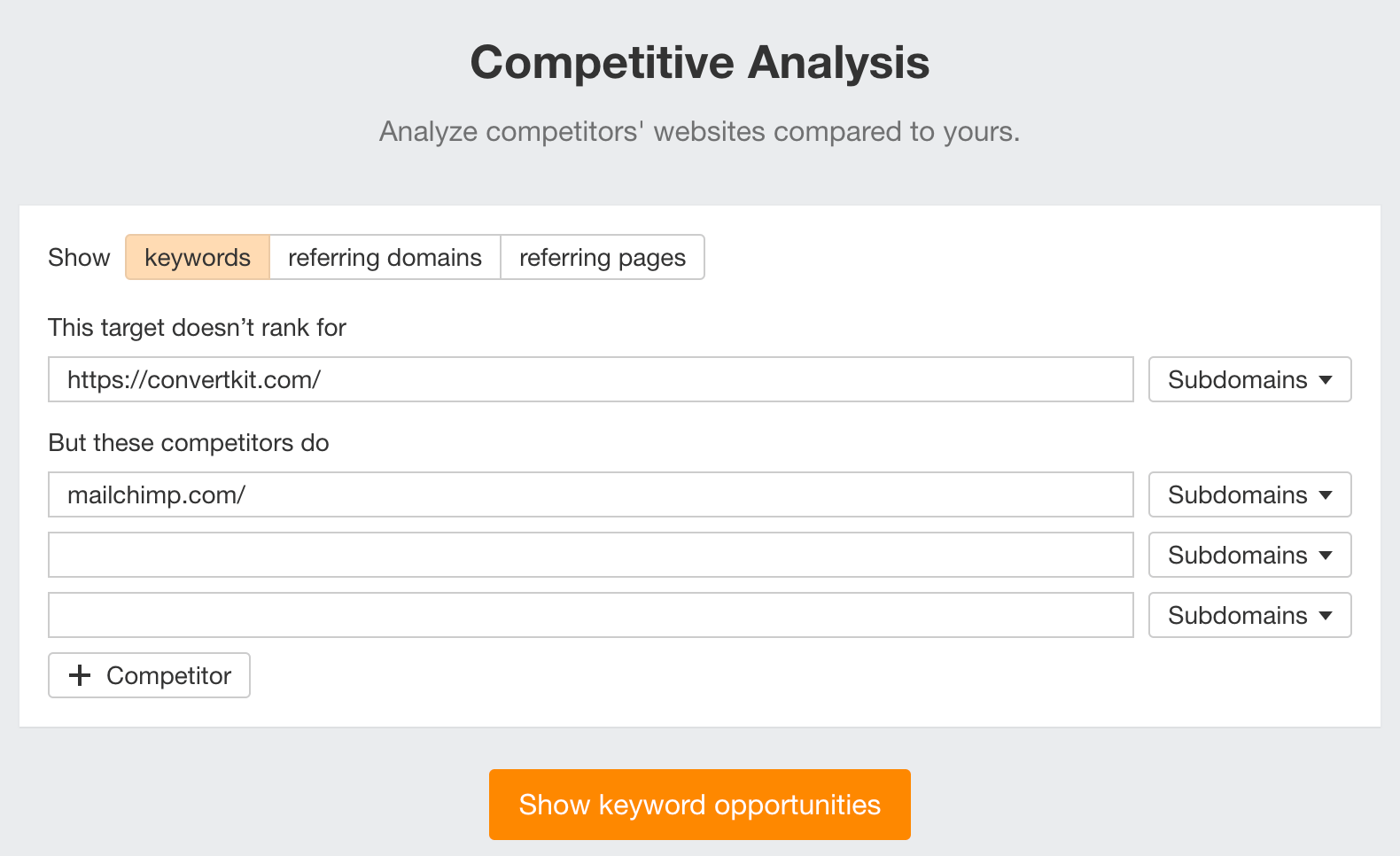

Hit “Show keyword opportunities,” and you’ll see all the keywords your competitor ranks for, but you don’t.
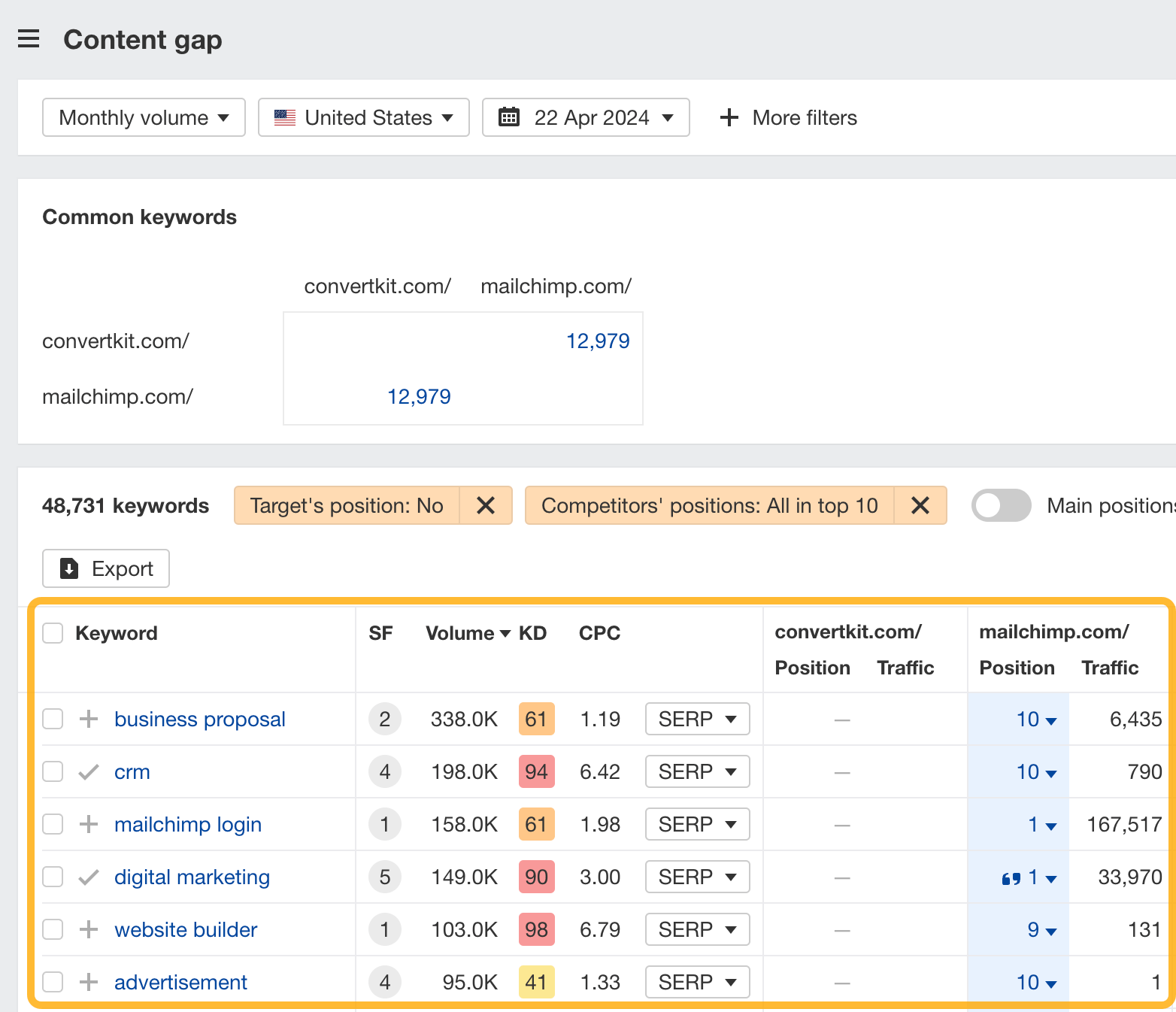

You can also add a Volume and KD filter to find popular, low-difficulty keywords in this report.
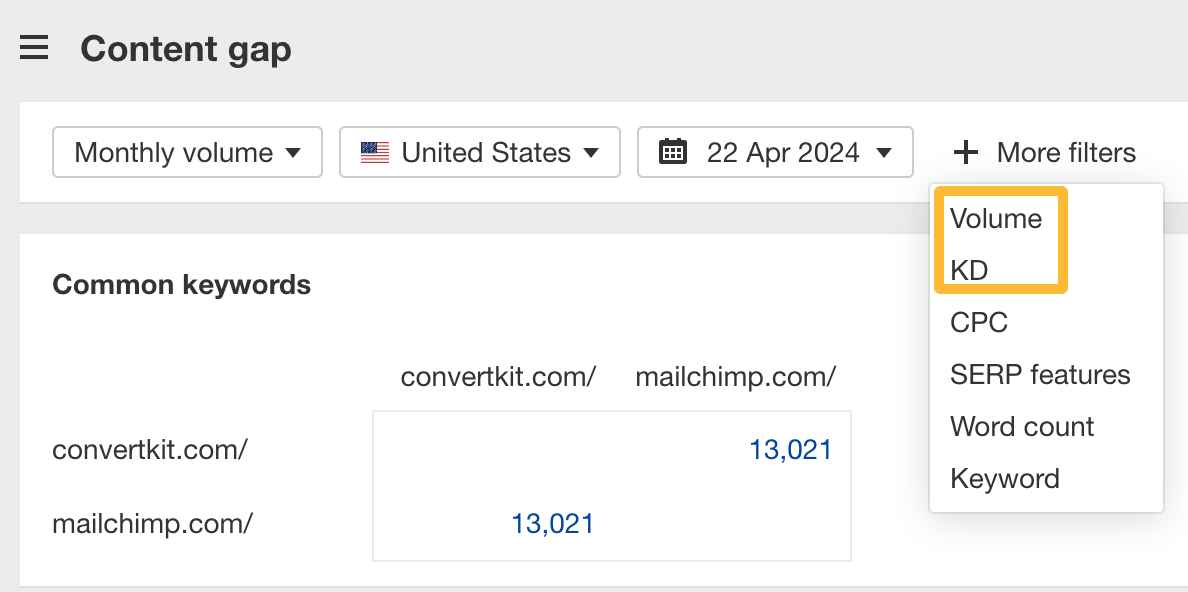

How to find keywords multiple competitors rank for, but you don’t
- Go to Competitive Analysis
- Enter your domain in the This target doesn’t rank for section
- Enter the domains of multiple competitors in the But these competitors do section
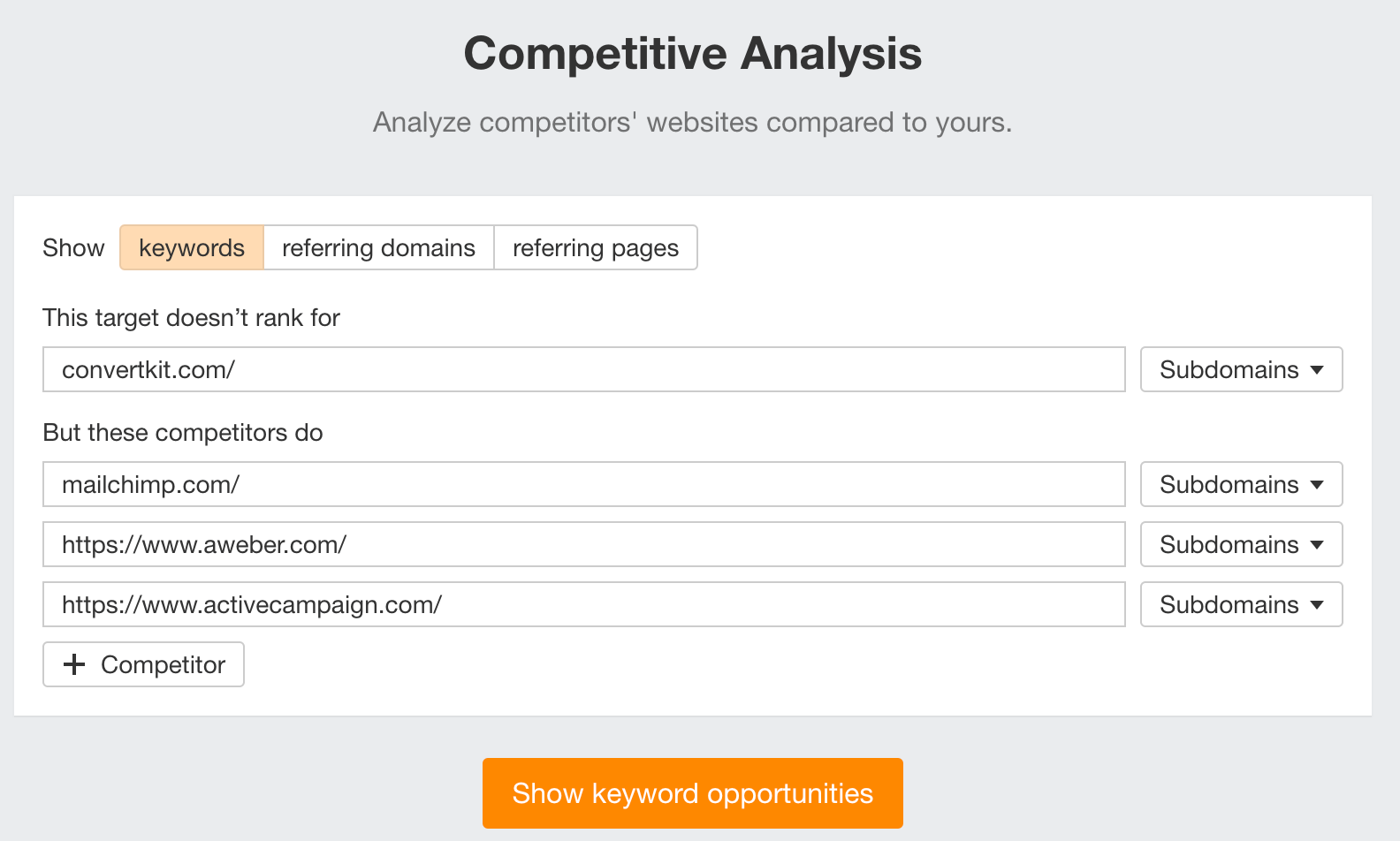

You’ll see all the keywords that at least one of these competitors ranks for, but you don’t.
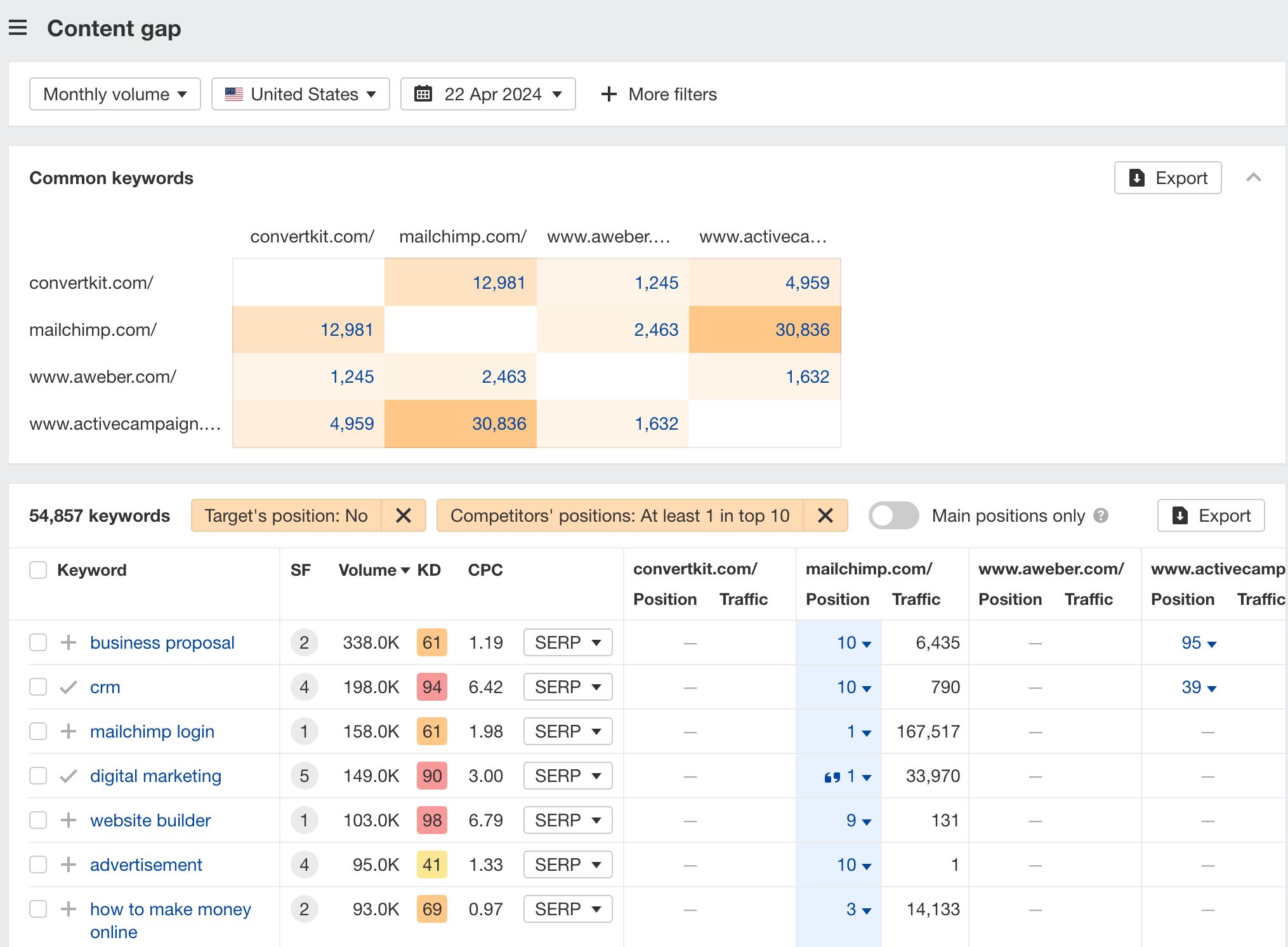

You can also narrow the list down to keywords that all competitors rank for. Click on the Competitors’ positions filter and choose All 3 competitors:
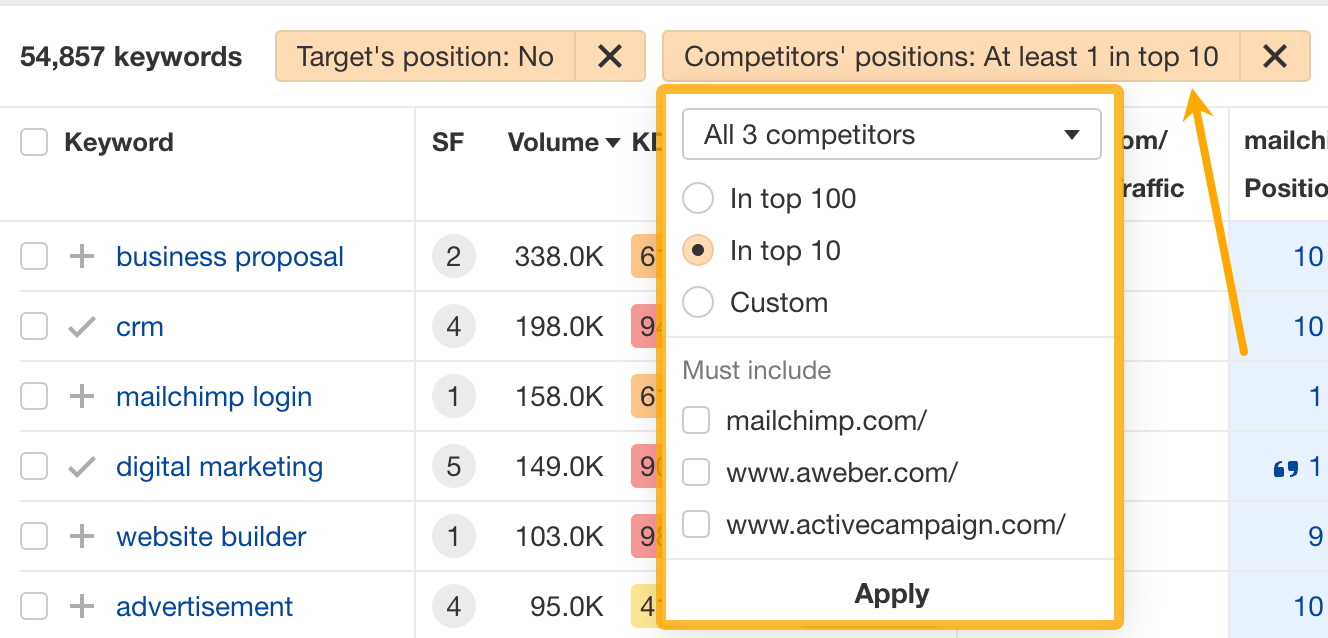

- Go to Ahrefs’ Site Explorer
- Enter your competitor’s domain
- Go to the Paid keywords report
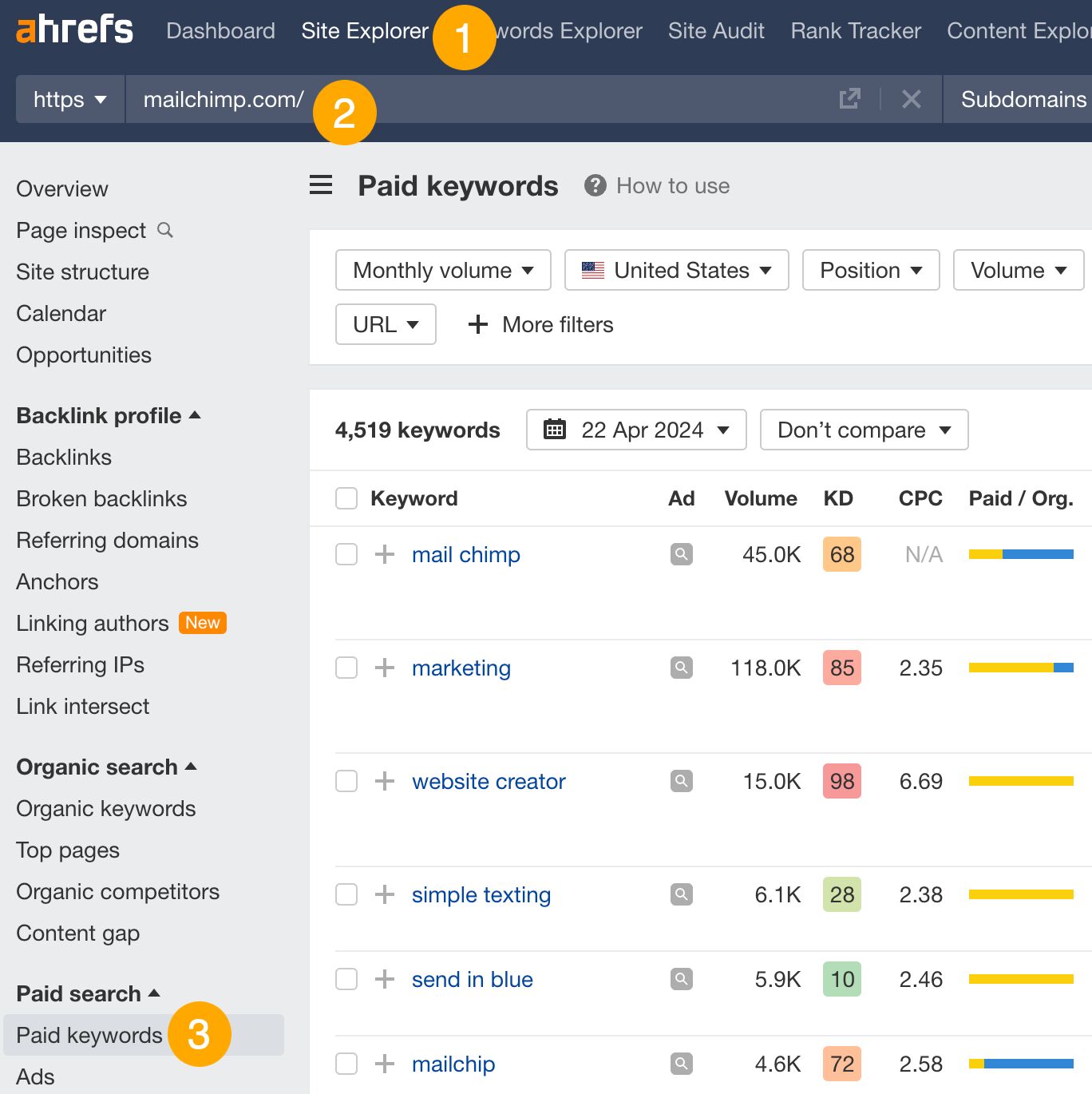

This report shows you the keywords your competitors are targeting via Google Ads.
Since your competitor is paying for traffic from these keywords, it may indicate that they’re profitable for them—and could be for you, too.
You know what keywords your competitors are ranking for or bidding on. But what do you do with them? There are basically three options.
1. Create pages to target these keywords
You can only rank for keywords if you have content about them. So, the most straightforward thing you can do for competitors’ keywords you want to rank for is to create pages to target them.
However, before you do this, it’s worth clustering your competitor’s keywords by Parent Topic. This will group keywords that mean the same or similar things so you can target them all with one page.
Here’s how to do that:
- Export your competitor’s keywords, either from the Organic Keywords or Content Gap report
- Paste them into Keywords Explorer
- Click the “Clusters by Parent Topic” tab
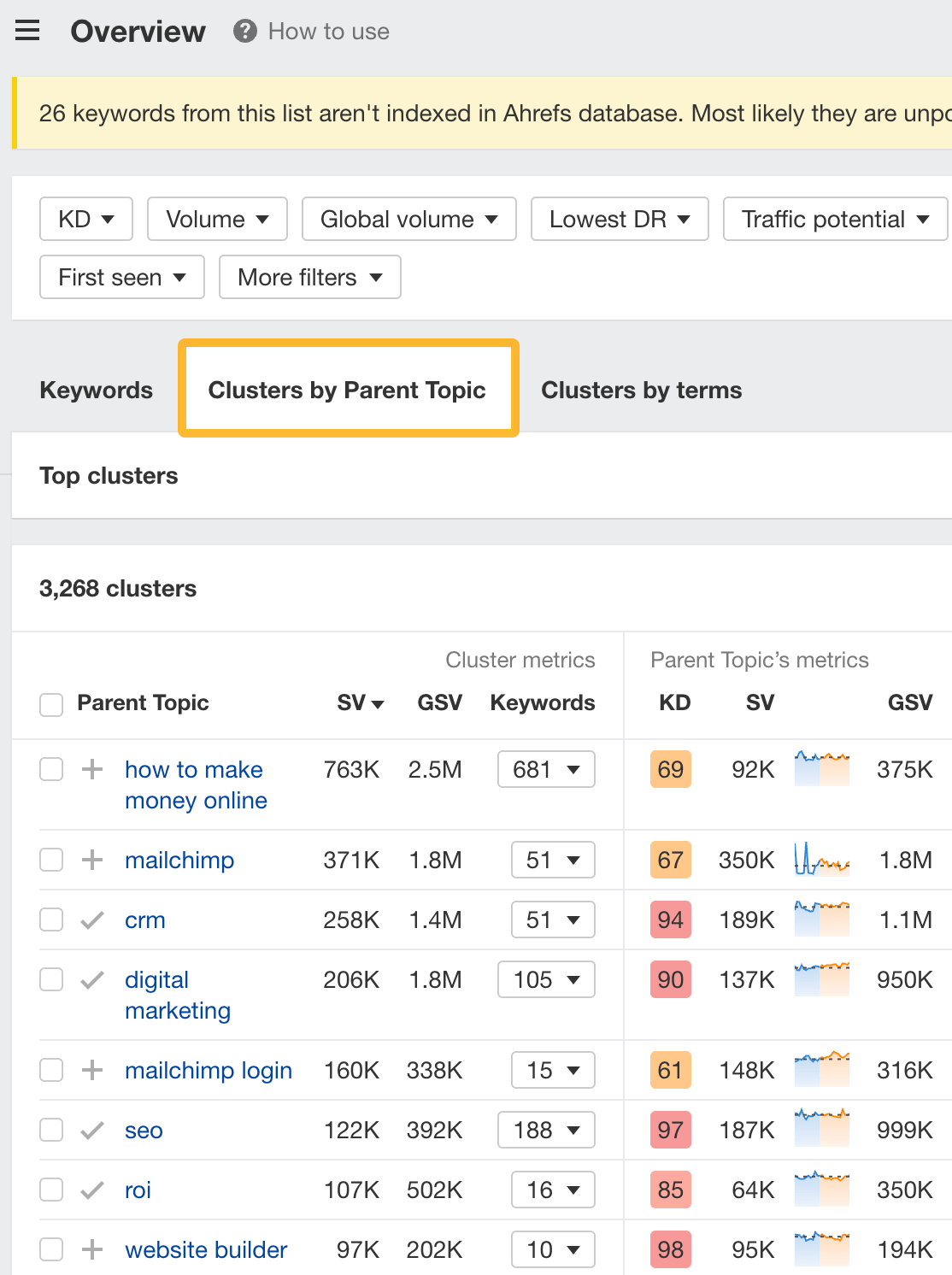

For example, MailChimp ranks for keywords like “what is digital marketing” and “digital marketing definition.” These and many others get clustered under the Parent Topic of “digital marketing” because people searching for them are all looking for the same thing: a definition of digital marketing. You only need to create one page to potentially rank for all these keywords.
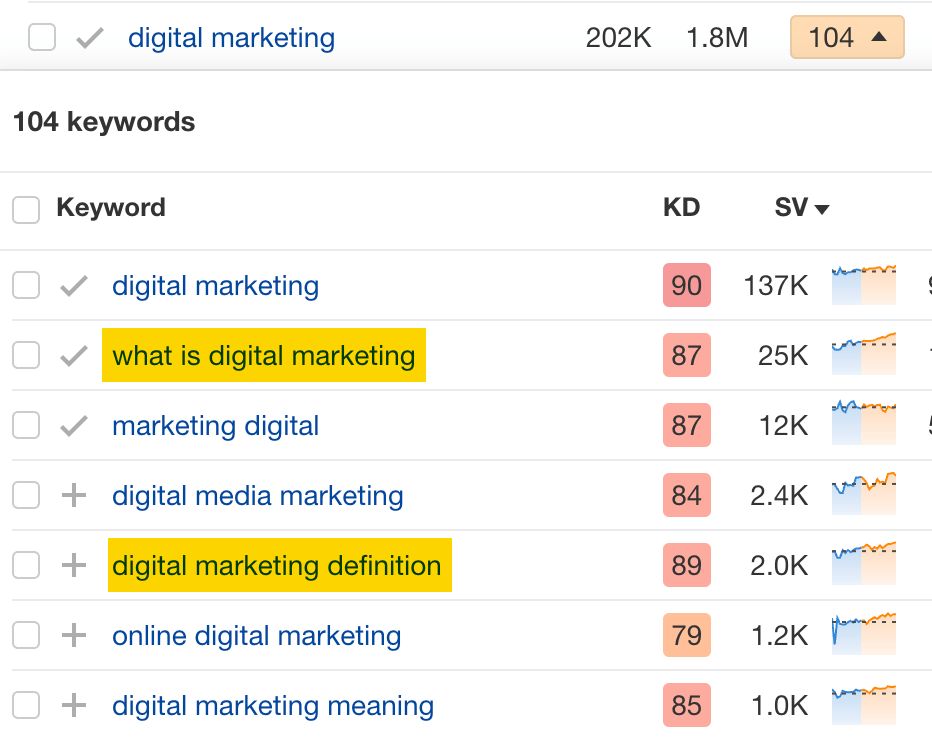

2. Optimize existing content by filling subtopics
You don’t always need to create new content to rank for competitors’ keywords. Sometimes, you can optimize the content you already have to rank for them.
How do you know which keywords you can do this for? Try this:
- Export your competitor’s keywords
- Paste them into Keywords Explorer
- Click the “Clusters by Parent Topic” tab
- Look for Parent Topics you already have content about
For example, if we analyze our competitor, we can see that seven keywords they rank for fall under the Parent Topic of “press release template.”


If we search our site, we see that we already have a page about this topic.


If we click the caret and check the keywords in the cluster, we see keywords like “press release example” and “press release format.”
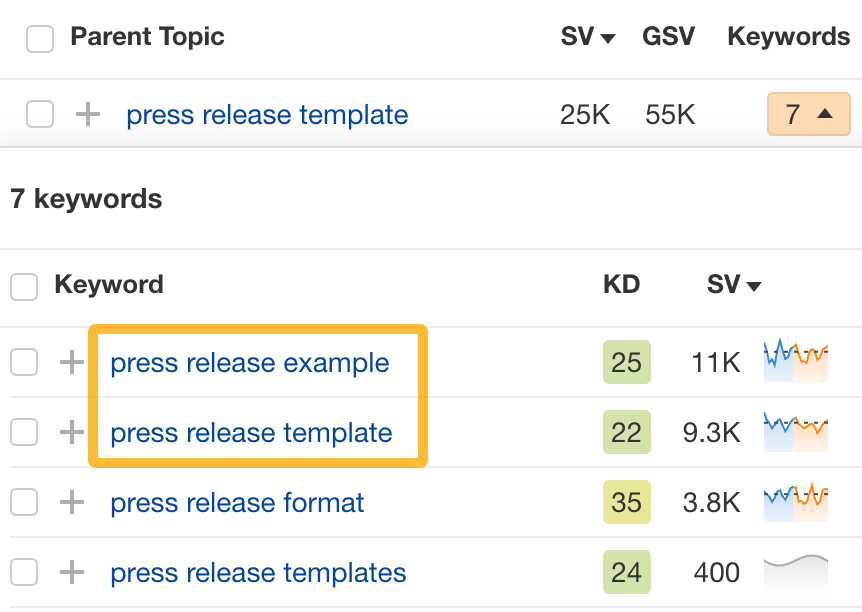

To rank for the keywords in the cluster, we can probably optimize the page we already have by adding sections about the subtopics of “press release examples” and “press release format.”
3. Target these keywords with Google Ads
Paid keywords are the simplest—look through the report and see if there are any relevant keywords you might want to target, too.
For example, Mailchimp is bidding for the keyword “how to create a newsletter.”


If you’re ConvertKit, you may also want to target this keyword since it’s relevant.
If you decide to target the same keyword via Google Ads, you can hover over the magnifying glass to see the ads your competitor is using.
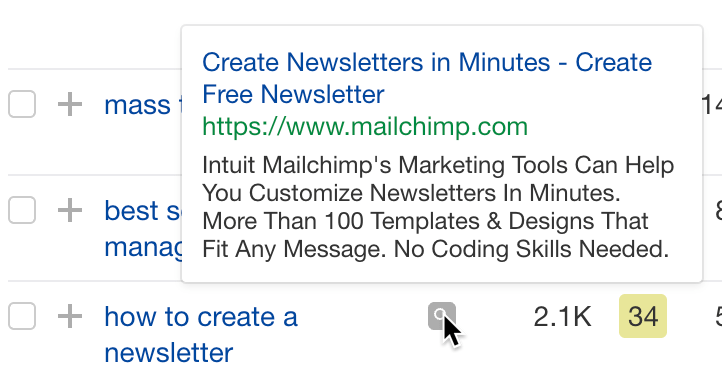

You can also see the landing page your competitor directs ad traffic to under the URL column.


Learn more
Check out more tutorials on how to do competitor keyword analysis:
SEO
Google Confirms Links Are Not That Important

Google’s Gary Illyes confirmed at a recent search marketing conference that Google needs very few links, adding to the growing body of evidence that publishers need to focus on other factors. Gary tweeted confirmation that he indeed say those words.
Background Of Links For Ranking
Links were discovered in the late 1990’s to be a good signal for search engines to use for validating how authoritative a website is and then Google discovered soon after that anchor text could be used to provide semantic signals about what a webpage was about.
One of the most important research papers was Authoritative Sources in a Hyperlinked Environment by Jon M. Kleinberg, published around 1998 (link to research paper at the end of the article). The main discovery of this research paper is that there is too many web pages and there was no objective way to filter search results for quality in order to rank web pages for a subjective idea of relevance.
The author of the research paper discovered that links could be used as an objective filter for authoritativeness.
Kleinberg wrote:
“To provide effective search methods under these conditions, one needs a way to filter, from among a huge collection of relevant pages, a small set of the most “authoritative” or ‘definitive’ ones.”
This is the most influential research paper on links because it kick-started more research on ways to use links beyond as an authority metric but as a subjective metric for relevance.
Objective is something factual. Subjective is something that’s closer to an opinion. The founders of Google discovered how to use the subjective opinions of the Internet as a relevance metric for what to rank in the search results.
What Larry Page and Sergey Brin discovered and shared in their research paper (The Anatomy of a Large-Scale Hypertextual Web Search Engine – link at end of this article) was that it was possible to harness the power of anchor text to determine the subjective opinion of relevance from actual humans. It was essentially crowdsourcing the opinions of millions of website expressed through the link structure between each webpage.
What Did Gary Illyes Say About Links In 2024?
At a recent search conference in Bulgaria, Google’s Gary Illyes made a comment about how Google doesn’t really need that many links and how Google has made links less important.
Patrick Stox tweeted about what he heard at the search conference:
” ‘We need very few links to rank pages… Over the years we’ve made links less important.’ @methode #serpconf2024″
Google’s Gary Illyes tweeted a confirmation of that statement:
“I shouldn’t have said that… I definitely shouldn’t have said that”
Why Links Matter Less
The initial state of anchor text when Google first used links for ranking purposes was absolutely non-spammy, which is why it was so useful. Hyperlinks were primarily used as a way to send traffic from one website to another website.
But by 2004 or 2005 Google was using statistical analysis to detect manipulated links, then around 2004 “powered-by” links in website footers stopped passing anchor text value, and by 2006 links close to the words “advertising” stopped passing link value, links from directories stopped passing ranking value and by 2012 Google deployed a massive link algorithm called Penguin that destroyed the rankings of likely millions of websites, many of which were using guest posting.
The link signal eventually became so bad that Google decided in 2019 to selectively use nofollow links for ranking purposes. Google’s Gary Illyes confirmed that the change to nofollow was made because of the link signal.
Google Explicitly Confirms That Links Matter Less
In 2023 Google’s Gary Illyes shared at a PubCon Austin that links were not even in the top 3 of ranking factors. Then in March 2024, coinciding with the March 2024 Core Algorithm Update, Google updated their spam policies documentation to downplay the importance of links for ranking purposes.
The documentation previously said:
“Google uses links as an important factor in determining the relevancy of web pages.”
The update to the documentation that mentioned links was updated to remove the word important.
Links are not just listed as just another factor:
“Google uses links as a factor in determining the relevancy of web pages.”
At the beginning of April Google’s John Mueller advised that there are more useful SEO activities to engage on than links.
Mueller explained:
“There are more important things for websites nowadays, and over-focusing on links will often result in you wasting your time doing things that don’t make your website better overall”
Finally, Gary Illyes explicitly said that Google needs very few links to rank webpages and confirmed it.
I shouldn’t have said that… I definitely shouldn’t have said that
— Gary 鯨理/경리 Illyes (so official, trust me) (@methode) April 19, 2024
Why Google Doesn’t Need Links
The reason why Google doesn’t need many links is likely because of the extent of AI and natural language undertanding that Google uses in their algorithms. Google must be highly confident in its algorithm to be able to explicitly say that they don’t need it.
Way back when Google implemented the nofollow into the algorithm there were many link builders who sold comment spam links who continued to lie that comment spam still worked. As someone who started link building at the very beginning of modern SEO (I was the moderator of the link building forum at the #1 SEO forum of that time), I can say with confidence that links have stopped playing much of a role in rankings beginning several years ago, which is why I stopped about five or six years ago.
Read the research papers
Authoritative Sources in a Hyperlinked Environment – Jon M. Kleinberg (PDF)
The Anatomy of a Large-Scale Hypertextual Web Search Engine
Featured Image by Shutterstock/RYO Alexandre
-

 PPC4 days ago
PPC4 days ago19 Best SEO Tools in 2024 (For Every Use Case)
-

 MARKETING7 days ago
MARKETING7 days agoWill Google Buy HubSpot? | Content Marketing Institute
-
SEARCHENGINES7 days ago
Daily Search Forum Recap: April 16, 2024
-

 SEO7 days ago
SEO7 days agoGoogle Clarifies Vacation Rental Structured Data
-

 MARKETING6 days ago
MARKETING6 days agoStreamlining Processes for Increased Efficiency and Results
-
SEARCHENGINES6 days ago
Daily Search Forum Recap: April 17, 2024
-

 PPC7 days ago
PPC7 days agoHow to Collect & Use Customer Data the Right (& Ethical) Way
-
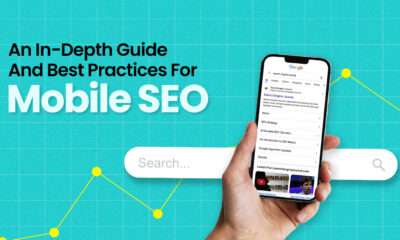
 SEO6 days ago
SEO6 days agoAn In-Depth Guide And Best Practices For Mobile SEO












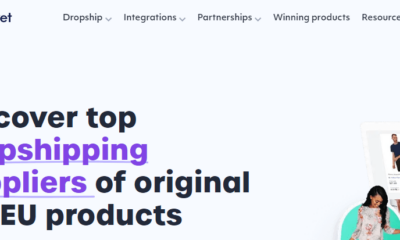



You must be logged in to post a comment Login